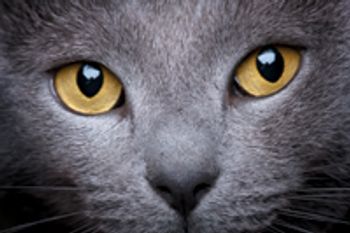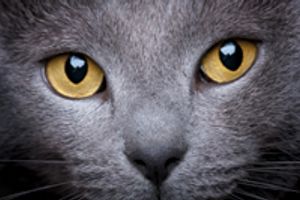
Dr. Kaese reviews ocular signs that may indicate systemic disease in patients.
Dr. Kaese graduated from the University of Minnesota College of Veterinary Medicine in 1999. She completed an internship in Large Animal Medicine and Surgery at the Ontario Veterinary College in Guelph, Canada. Following her internship, Dr. Kaese completed a residency in Large Animal Internal Medicine and a Masters degree in Comparative Medicine and Pathology at the University of Minnesota. She is a Diplomate of the American College of Veterinary Internal Medicine. She then completed a residency in Comparative Ophthalmology at Eye Care for Animals in Chicago and became a Diplomate of the American College of Veterinary Ophthalmologists. Her research and practice interests include equine uveitis and companion animal corneal disease. Dr. Kaese currently practices in Lees Summit and Springfield, Mo., as well as Overland Park, Kan.

Dr. Kaese reviews ocular signs that may indicate systemic disease in patients.

A good ocular examination begins with a complete medical history. The saying goes that the eyes are the window to the soul – to the ophthalmologist they are often a window to illness elsewhere in the body. The general medical history should be scrutinized starting with signalment and work/play/housing environments.

The SCCED represents a specific unique type of corneal ulcer that is frustrating for veterinarians and clients alike. They are chronic, superficial, non-infected, and present with the patient minimally to severely painful. Most are characterized by a superficial erosion of the corneal epithelium with loose epithelial edges and variable corneal vascularization.

Distichiae are aberrant hairs that arise from the meibomian glands and exit through the meibomian gland opening in the eyelid margin. Distichiasis occurs commonly in many breeds of dogs. In some breeds the hairs cause virtually no clinical signs (e.g., Cocker Spaniels), whereas in other breeds they can result in epiphora, corneal fibrosis and vascularization, and occasionally corneal ulceration.

A good ocular examination begins with a thorough medical history. The saying goes that the eyes are the window to the soul – to the ophthalmologist they are often a window to illness somewhere else in the body. Start with the basics; signalment, use, as well as housing, work, and turnout environments.

Equine Recurrent Uveitis (ERU) is the most common cause of equine blindness and it has an estimated yearly cost to the equine community of 100 to 250 million dollars.

Published: August 1st 2010 | Updated:

Published: August 1st 2010 | Updated:

Published: August 1st 2010 | Updated:

Published: August 1st 2010 | Updated:

Published: August 1st 2008 | Updated:

Published: December 1st 2013 | Updated: